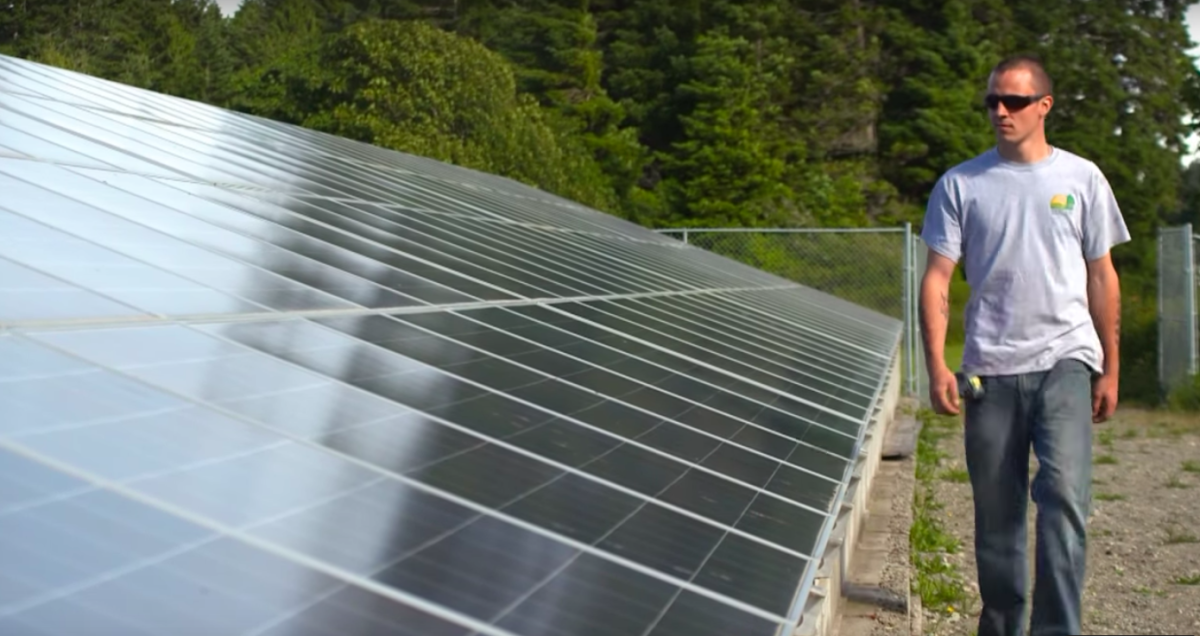Support strong Canadian climate journalism for 2025
Environmental issues are usually amongst the first issues for consideration when First Nations consider development and they must decide what impacts to their rights and title are acceptable. What can appear to be somewhat paradoxical for some people is that environmental pressures can instead serve to be amongst the strongest of driver for economic self-sufficiency for First Nations in B.C.!
The Financial Post got this exactly backwards in its Nov. 16 article "'Sickening': First Nations left empty-handed as environmentalist pressure kills B.C. energy projects." In fact, clean technology is one of the fastest growing sectors in the world and it already makes up over 5 per cent of global GDP. In B.C., Independent Power Producers (IPPs) are focused on this new world. They are a vital element of the electricity production in B.C. and they work hand in hand with First Nations and BC Hydro to keep the lights on and the carbon emissions very low.
Clean energy sits at the very core of this expansion as the world shifts from high carbon industries to low and zero carbon. This is about the transition away from sunset industries to sunrise industries. It is about engaging directly with First Nations communities so that they can benefit from local power production, ownership and sustainable economic development. IPPs enable the distribution of energy generation to a wide variety of parties throughout the province which serves to catalyze economic development across the province’s First Nations, local municipalities, rural and urban environments. This is especially vital for First Nations because a dollar spent in a local economy, on local labour, with local products, with local investment can result in many times as much value as the same dollar spent on a product from a large corporation with outside suppliers, outside employment and profits leaking out of the local economy. This is called Local Multiplier 3 (LM3), in economic terms.
“LM3 measures the multiplier effect of income into a local economy over three 'rounds' of spending. The multiplier is then calculated for every unit of currency spent within a ‘local’ area selected by the user. For example, an LM3 score of 3.50 would indicate that every $1 earned by a project generates an additional $2.50 for your local area.”
We are starting to see radical decreases in cost and increases in performance of clean technology. In 2015 Photovoltaic (PV) solar costs dropped by over 50 per cent from 2010 and they are anticipated to drop another 40 per cent by the end of this year. Wind power is following a similar trajectory with a reduction in cost of 50 per cent in the last 5 years. Electricity storage is also in the midst of a renaissance with costs dropping over 77 per cent since 2010, even before the role out of industrial manufacturing giants (think of the Tesla Gigafactory).
At its heart, this is about fostering a vibrant and long term decentralized renewable energy sector in B.C. that supports First Nations innovation, clean technology industries, jobs and the local economy.
Although First Nations in British Columbia are already very active participants in the renewable energy sector, very little research has been conducted to assess the scope and implications of their involvement. Seeking to address this knowledge gap, the B.C. First Nations Clean Energy Working Group (FNCEWG) partnered with researchers at the University of Victoria’s School of Environmental Studies to conduct a province-wide survey. Support for the survey was provided by Clean Energy BC and Indigenous and Northern Affairs Canada (INAC).
The research team attempted to contact 203 First Nations across the province from October 2016 to February 2017. In total, we received responses from 102 (50 per cent) First Nations and three Tribal Councils. The survey results presented in this report thus indicate the minimum level of First Nations’ involvement in the renewable industry in B.C. at the beginning of 2017.
How are First Nations currently involved in renewable energy development?
- First Nations are eager for more involvement. The survey results indicate 98 per cent of respondents are already involved or wish to be involved in the sector.
- First Nations are substantially involved in the renewable energy sector, with 49 respondents indicating that they have operational projects or projects under development in all but one development region of the province.
- Thirty respondents indicated having 78 operational projects, with a total generating capacity of 1,836 MW. Run-of-river hydro made up 61 per cent of these projects.
- Thirty-two respondents indicated 48 projects in planning or construction. Run-of-river hydro made up 36 per cent of projects, solar (PV) made up 25 per cent and geothermal and biomass made up 17 per cent each.
- Of operational projects, 42 were selling power back to the grid through BC Hydro’s Call for Power program. These projects make up the vast majority (96 per cent) of the generating capacity of operational projects.
How would First Nations like to be involved in renewable energy development?
- Seventy-seven respondents reported having nearly 250 projects under consideration. These include a greater variety of renewable energy technologies than existing projects: 36 per cent run-of-river hydro, 26 per cent solar (PV), 13 per cent biomass, and 12 per cent wind.
- Respondents with no prior involvement in the industry have 61 per cent of projects under consideration.
Potential impacts of a decelerated renewable energy industry?
- First Nations are not only benefitting economically from renewable energy development, but in myriad other ways including increased self-sufficiency, environmental stewardship, ownership of income generating assets, community capacity, and pride.
Clean energy presents possibly the single most efficient and effective way of empowering First Nations communities. Renewable energy offers flexibility and adaptability that can quickly bridge any gap that arises in B.C.’s energy needs, it enables B.C. and Canada to achieve our carbon reduction targets; while at the same time offering amongst the most effective reconciliation opportunities available for the B.C. Provincial Government.
Co-author Judith Sayers is President of the Nuu-chah-nulth Tribal Council and Adjunct Professor with the Peter B Gustavson School of Business at the University of Victoria
Co-author Jae Mather is Executive Director at Clean Energy BC






Comments